ELAC Vela FS 407 Review
Despite the success of its Debut and Adante models, ELAC retains its traditional designs, complete with JET tweeter
Review: David Price
Lab: Keith Howard
Two-and-a-half-way reflex-loaded floorstanding loudspeaker Made by: ELAC Electroacustic GmbH, Kiel, Germany Supplied by: Invision UK Ltd, Diss, Norfolk Telephone: 01359 270280 Web: www.elac.com; www.invisionuk.com
Constant change is here to stay’ as the saying goes. And it’s certainly true of ELAC – one of Germany’s most long-established hi-fi manufacturers – as the brand has spread its wings over the past few years. ELAC began life way back in 1926 in the coastal town of Kiel, where its main focus concerned the development of sonar systems. It was after the Second World War that it began manufacturing turntables and pick-ups.
In 1981 it was acquired by Wolfgang John who built ELAC up to the company we know now, latterly with his son Oliver at the helm. It made its first speakers in 1984, and has never looked back.
With a change of CEO in late 2017 and designer Andrew Jones joining long-time Director of R&D Rolf Janke, the brand has taken on a new lease of life. It now makes a dizzying range of speakers, including the Jones-designed Adante and Navis ranges [HFN Feb/Jul ’18 & Aug ’19] developed in the USA, plus the more traditional German Vela series with its iconic JET tweeter.
Janke says that, ‘as a global brand, we tailor to different markets that have different expectations in terms of pricing, design and sound’. In the case of the Vela FS 407 loudspeaker we have here, the industrial design was completed in North America while the acoustic engineering was driven from Germany.
JET PROPELLED
Retained from its 400-series predecessor is the JET 5 planar tweeter – the highlight of this loudspeaker. It uses a light, folded foil membrane and neodymium magnets to produce an extended frequency response said to go up to 50kHz [see KH’s boxout, p65, and Lab Report, p67]. This is matched to a pair of conventional moving-coil drivers, 150mm in diameter, with large roll surrounds and cast aluminium baskets.
A two-and-a-half way design, the upper midrange unit takes over from the treble
‘The propulsive double bass hogs this sparse recording.’
unit at 2.4kHz, and the lower bass driver kicks in at 450Hz. As for the cones, these are made using an aluminium-sandwich technology folded to resemble a large crystal. This, says the company, delivers stiffness with relatively low mass, and good self-damping properties too.
The cabinet’s convex shaped baffle extends down to an alloy bottom plate, which has an aperture for the down-firing bass reflex port. This fits into a die-cast plinth that confers impressive stability, as well as looking classy. ELAC says that the rearward angling of the speaker’s trapezoidal shape, alongside the JET tweeter’s new waveguide, improves stereo image accuracy. The angling of the Vela FS 407 also lends visual drama.
The speaker is supplied with a fabric grille over a wooden frame, attached by magnets hidden beneath the cabinet’s front baffle. This pretty looking yet sturdy product is topped off by an inset aluminium plate, black anodised to match the choice of gloss black, gloss white or walnut cabinets.
Placement proved straightforward in my room – possibly aided by the down-firing reflex port – with the speaker working well from around 30cm out from the boundary wall. For optimum stereo imaging, a few degrees of toe-in really helps.
© SMOOTH ‘N’ SILKY
The Vela FS 407’s most apparent sonic feature is – perhaps not entirely unexpectedly – its smoothness and evenness. This comes in large part from the JET tweeter, which is as good as I have ever heard it – and indeed it seems to integrate with the other drivers below better than ever. At the same time, the midband is
RIGHT: The FS 407 features an updated version of ELAC’s JET tweeter [see boxout, p65] combined with a pair of AS XR bass/midrange drivers. The cabinet is shaped to minimise internal reflections and external diffraction


clean and couth yet precisely detailed, and bass is tight and extended. The result is a most pleasing-sounding speaker that, while not totally flawless, is hard not to like. It also shows how far the company’s sound has progressed in the past few years.
DETAIL STUDY
It’s impossible to ignore this speaker’s exceptional high frequency performance, regardless of the music being played. It flatters everything. For example, ‘London Town’ by Wings [from London Town; Parlophone TOCP-65510] is a super sounding Abbey Road studio recording, with George Martin at the controls. It has some beautifully recorded acoustic instruments, from violins to cor anglais.
The Vela FS 407 made a lovely job of it, giving an open and spacious sound. Hi-hat cymbals had a crispness and sheen I’ve rarely heard from any speaker, while the rich harmonics from the electric organ and massed string backing shimmered all around. Fascinatingly, the tape hiss from this old analogue recording was clear to hear, yet it was very softly and smoothly carried rather than grating on my ears.
The smoothness of the tweeter isn’t just its only party trick – another is how evenly it integrates with the midrange driver. There’s no sense of the speaker’s midband being lumpy or hard for example, instead there’s a seamless transition from one drive unit to the other. The Wings track clearly showed this, but so did rougher and less ‘hi-fi sounding’ recordings such as ELO’s ‘Thunder And Lightning’ [Out Of The Blue; Epic 88697053232] from the same period.
This is heavily compressed and has some strange EQ applied that favours a midforward sound possibly geared towards AM radio. The Vela FS 407 seemed utterly unfazed by this, sashaying its way through the song without any sign of harshness, even at high listening levels.
A LITTLE SQUEEZE
Conventional loudspeaker diaphragms – whether cone, dome or planar – move back and forth along the axis that they radiate sound. The air motion transformer (AMT), patented by German engineer Dr Oskar Heil in 1973, operates quite differently. Pleated like an accordion, it displaces air by squeezing it out from its crevasses. Thin aluminium strips bonded to the diaphragm carry the signal current and generate the squeezing motion in much the same way as a conventional voice coil, by interacting with a static magnetic field. Oscar Heil conceived AMTs that worked at bass frequencies, and his ideas were exploited in Tymphany’s compact LAT subwoofer, now discontinued. But most AMT drivers today are tweeters, where a resurgence of interest in the technology is evident in ELAC’s JET tweeter and the extensive range of AMT tweeters – including dipole models – now sold by Mundorf. Claimed advantages are a total radiating area many times greater than an equivalently sized dome tweeter, which benefits power handling and distortion performance, and a resistive impedance which simplifies crossover design.
The third highlight of this loudspeaker is its excellent detail retrieval. Even with modest-sounding source material such as ‘King’ by UB40 [Signing Off; DEP International CDOVD439] – which was actually, legend has it, recorded in the producer’s kitchen – the Vela FS 407 had an uncanny ability to scythe through the mush to reproduce the music in a vibrant, living and breathing form.
Of course the other drive units come into play here too, but it’s the transient speed of the tweeter that really makes things so special. It was a joy to behold all the respective elements of the mix. from the heavily effects-processed electric organ to the saxophones and clarinet. This loudspeaker is a class act.
CLEAR TO HEAR
Instrumental timbres are also realistically exposed, almost like the speaker is wiping the detritus off the lens to bring the listener a crisp and accurate view of what is going on at the mixing desk, from bottom to top. It’s certainly far more translucent sounding than many rivals, and this is greatly aided by a thoughtfully-engineered cabinet that doesn’t sully the sound in any obvious manner. Indeed, that handsome, sturdy box surely goes a long way to explain why the Vela FS 407’s bass sounds so neutral and even. Of course, physics dictates that it’s not able to mix it with seriously large floorstanders, yet still it has a great go at reproducing bass accurately.
‘King’ has a deep, sumptuous bassline and this speaker carried it with surprising dexterity, sounding neither overblown nor bloated. Rather, the playing retained a fair deal of heft without slurring or slowing the song down. As the bass player goes

LEFT: Alloy bottom plate also provides the exit for ELAC’s downward-firing reflex port. The bass/mid and treble crossover is split and terminated in two sets of 4mm speaker cable terminals
up and down the scale, so does the speaker – and the result is a tuneful, engaging sound. This really came into its own with jazz music like Lou Donaldson’s ‘One Cylinder’ [Alligator Bogaloo; BlueNote TOCJ-9103], where the propulsive double bass work absolutely dominates what is otherwise a pretty sparse recording.
So far, so good – but it’s not all plain sailing for the Vela FS 407. While certainly a highly capable all-rounder – one that is able to give its price rivals a seriously hard time – this floorstander will still only move
a finite amount of air from its mid-sized cabinet. You only notice this at higher volumes, when you can hear some dynamic compression to programme material.
I detected an example of this when listening to the excellent recording of Mahler’s Symphony No 4, with Ivan Fischer and his Budapest Festival Orchestra [Channel Classics CCS SA 26109], which in the opening movement demonstrates plenty of dynamic light and shade. On the powerful crescendos, especially where low range instruments like massed cellos are involved, it sounded slightly breathless and lacking in punch.
DEEP SPACE
Nevertheless the Vela FS 407 is still very adept at conveying subtle dynamic contrasts within a piece of music while also reproducing a better sense of ‘space’ than might be anticipated from its relatively compact frame. So, with the Mahler, it served up a panoramic sense of the concert hall, with plenty of space about the orchestra along with a keen sense of the location of the individual instrumentalists What’s more, there was a very realistic feeling of atmosphere to the recording, and surprisingly good stage depth too. This, plus the speaker’s subtle accenting of the playing, brought out the life and soul of the sound to impressive effect.
HI-FI NEWS VERDICT
The new Vela FS 407 is a very capable floorstanding speaker, and one that shows ELAC is now able to deliver a broad spectrum of models that are right up with the best of their contemporaries. It performs the unusual trick of both being very appealing to look at, and to hear. Fast, lithe, agile, smooth, open and engaging, it works skilfully across a wide range of music, and so will surely have far reaching appeal.
LAB REPORT
ELAC VELA FS 407
The FS 407 is compact as floorstanders go, so even with a 4ohm nominal impedance its specified 88dB sensitivity looks optimistic. Our measurements recorded almost 87dB as a simple FFT mean but 86.1dB SPL for 2.83V at 1m on the industry standard pink noise input, and less on a typical music spectrum, so 86dB looks to be a more realistic figure. In addition to specifying a 4ohm nominal impedance ELAC quotes a minimum of 3.5ohm/200Hz, which is very close to the 3.5ohm minimum we recorded at 184Hz. Impedance phase angles are unusually tightly controlled, so the minimum EPDR (equivalent peak dissipation resistance) is a little higher than typical at 2.1ohm/210Hz – but other dips to 2.1ohm/20Hz and 2.6ohm/353Hz complicate the picture.
The forward frequency responses, measured at 1m on the tweeter axis [Graph 1, below], show a distinct dishing of output through the presence band – the famous ‘BBC dip’ – which suggests that the FS 407’s stereo imaging will be somewhat recessed, although that’s a presentation many listeners like. Despite that the response errors are modest at ±3.3dB and ±3.6dB, respectively. Although pair matching error over the same 200Hz-20kHz is disappointing at ±1.8dB, the largest disparities are narrowband and in the middle- and high-treble. Diffraction-corrected nearfield bass measurements – made more challenging by the ‘open mouth’ port – showed the expected fourth-order (24dB/octave) roll-off below 40Hz but a gentler transition to 70Hz. The cumulative spectral decay waterfall [Graph 2] shows some resonance associated with the response dip at about 2.2kHz and peak at around 4kHz. KH
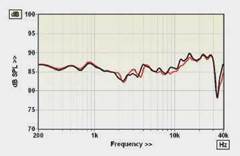
ABOVE: Broad depression of presence output in the forward response is indicative of the classic ‘BBC dip’
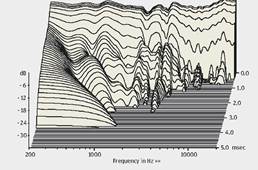
ABOVE: Cabinet modes are adequately suppressed but there are driver resonances at 2kHz and 4kHz
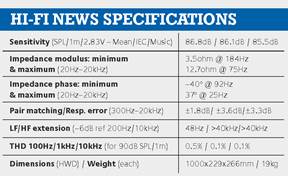


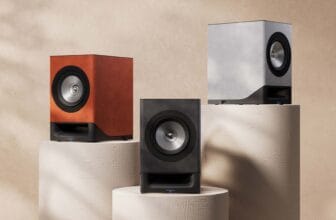

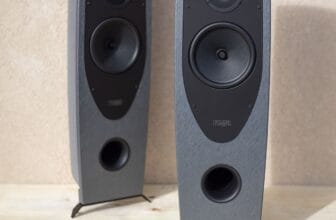
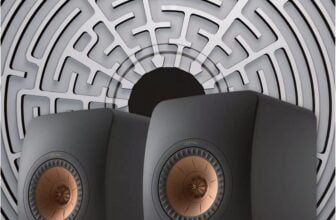
I have been eyeballin these speakers, and my question is this. Would you think that these would do good for movies to? I want an allround speaker for both music and movies (5.1) would appriciate If you could answer
I can answer 🙂 because I’ve had these speakera for at least 5 years already. Although I mainly listen to music, I do the occasional movie as well and they’re great, no matter whether you’re watching action flics, greaaat bass, or a more sensitive drama, these speakers are very convincing and engaging. Greets from the Netherlands